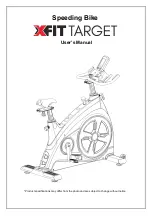
progenitors or stem cells. These results might indicate that the
route to adipocyte differentiation is not uniform as defined by
the
in vitro
cellular model, but rather that it depends upon the
cell type and environment. The increased expression levels of
both
Klf4
and
c-Myc
in IRI models might be due to intracardiac
fatty degeneration following MI.
Previous
in vitro
studies of the molecular pathways under-
lying adipogenesis are based on limited adipogenic cell
lines.
Adipogenesis involves two distinct waves of TF
expression and six defined differentiation stages: mesenchy-
mal precursors, committed preadipocytes, growth-arrested
preadipocytes, mitotic clonal expansion, terminal differentia-
tion and mature adipocytes.
Preadipocytes differentiate
into lipid-laden and insulin-sensitive adipocytes upon the
addition of exogenous adipogenic stimulation cocktails in
confluent culture growth conditions.
Klf4
is one of the earliest
TFs in the first wave and is regulated by cAMP
and the
JAK-STAT pathway, mechanisms that maintain the pluripo-
tency of embryonic stem cells.
As the Jak-Stat pathway is
activated by external stimuli such as reactive oxygen species
(ROS),
Klf4
mediates the response to external stress.
KLF4 directly transactivates the
C/EBP
β
gene by binding to
the promoter region, and is a key TF in the first wave that relays
the signal to PPAR
γ
, a central factor in adipogenesis.
However, within 1 h of adipogenic stimulation of confluent
3T3-L1 cells,
c-Myc
is rapidly and highly expressed, along with
c-Fos
and
c-Jun
Constitutively overexpressed
c-Myc
inhibits the differentiation of 3T3-L1 cells, possibly by
precluding the entry of cells to a distinct predifferentiation
stage in G
0
/G
1
The peak in the expression of
c-Myc
might
function as an amplifier of the expression of other genes to
surpass the threshold from a stable, low-level position in
adipocytes and not as an activator of the cell cycle.
In this
experiment, neither
Klf4
nor
c-Myc
transduction alone induced
adipogenesis from CMPs, suggesting that KM cooperatively
function to induce adipogenesis.
Little is known about
in vivo
adipogenesis or
de novo
adipocyte generation, which is referred to as hyperplasia in
terms of tissue growth, owing to the post-mitotic nature of
mature adipocytes. In adipose tissue, resident MSCs are
considered to be a major source for adipocyte generation.
Some studies have reported
in vivo
adipocyte differentiation
from MSCs, which expressed similar cell surface antigens to
those expressed by the CMPs in this study.
Recently,
myocardium-derived stem/progenitor cells such as cardiac
stem cells and CMPs have been reported by several
institutes.
CMPs, which we isolated from murine hearts
and defined as a Sca-1-positive population, expressed a
similar surface antigen profile to that of MSCs,
except for
CD73 and CD34. The origin of each MSC influences its
molecular phenotype, including the transcriptional network,
epigenetic
landscape
and
subsequent
differentiation
CMPs are a distinct population from bone
marrow, adipose tissue or skin-derived MSCs, with an
expression profile of TFs characteristic of the heart. Only KM
induced the differentiation of CMPs into adipocytes, potentially
owing to the default settings of the TF network.
Baroldi
et al.
reported adipose tissue formation in the
excised heart during transplant surgery, and this was termed
lipomatous metaplasia. Another study using the recipient
heart in transplantation showed consistent ectopic fat formation,
representing 84% of healed MI.
Imaging analyses in patients
with a history of MI using either computed tomography
or magnetic resonance imaging
have demonstrated a similar
prevalence of ectopic fat formation, which was found in
approximately 65% of individuals. These reports suggest that
Figure 7
Gene expression in tested areas of ischemia reperfusion injury hearts. (
a
) TTC staining and Oil red O staining of ischemic reperfusion heart. RA, AOR and AAR
indicate RA, AON and AAR, respectively. Black bar: 1 mm. (
b
) qRT-PCR analysis for the expression of genes in the ischemic reperfusion mouse heart on each day. Individual
RNA expression levels were normalized to the respective mouse
Gapdh
expression levels. Error bars indicate S.E. (
n
=
3). * and ** indicates statistically significant differences in
each color box. (
P
o
0.05 and 0.01, in the order described).
†
also indicates statistically significant difference from IRI non-treatment heart (0 h) (
P
o
0.05 and 0.01, in the order
described). Relative gene expression in the RA at 0 h is regarded as 1
Cardiac adiposity is regulated by
Klf4
and
c-Myc
D Kami
et al
9
Cell Death and Disease






























